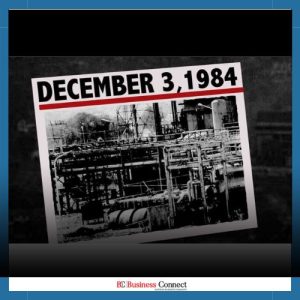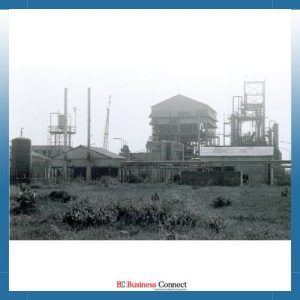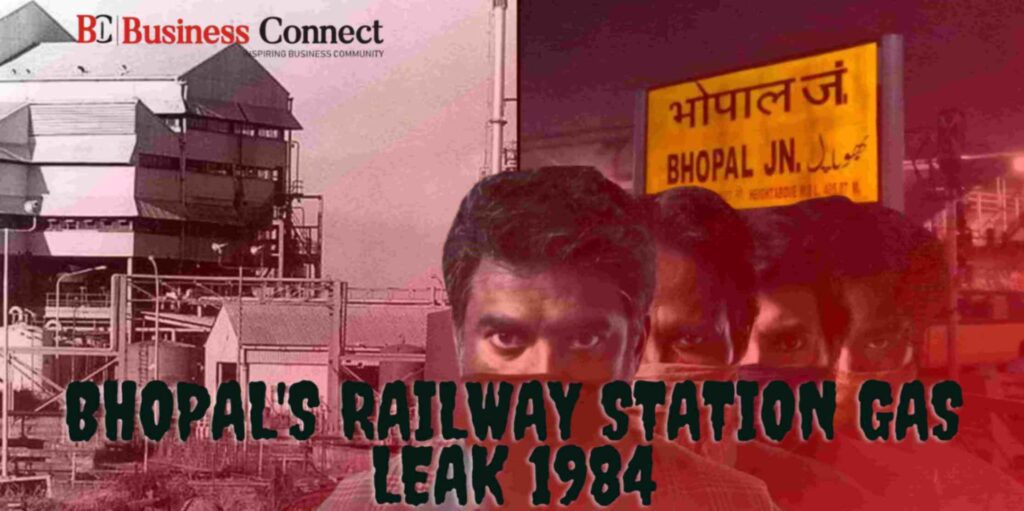Bhopal’s Railway Station Gas Leak 1984
By-Anurag Tiwari
Hello, Business Connect readers, on the night of December 3, 1984, at approximately midnight, In Bhopal’s train station bhopal junction the station superintendent H.S. Bhurvey and the deputy station superintendent Ghulam Dastagir were on duty.
Unsung Heroes: Ghulam Dastagir’s Selfless Act Amidst Chaos
Around 1 o’clock, the Gorakhpur-Bombay express arrived at the station, prompting Dastagir to leave his cabin. Suddenly, he experienced burning eyes and a sore throat. Concerned, he searched for Bhurvey, his superior, to inform him about this, but couldn’t find him. Moments later, he found Bhurvey lying on the ground. Dastagir tried to check whether he was breathing, but realized that Bhurvey had passed away.
However, after the third call, the response was uncertain: the people at the factory claimed that they didn’t know what had happened. “We don’t know what has happened.” By 2:10 AM, the hospital had admitted around 4,000 patients, and chaos was unfolding at Bhopal Junction Station. Dastagir had ensured that the Gorakhpur Bombay Express had left the station, but aiding people became increasingly challenging.
Dastagir immediately understood the cause The thing is that, a kilometer away from Bhopal Junction, in the Union Carbide factory there had been a hazardous incident, releasing 50,000 pounds of poisonous gas, including MIC, hydrogen cyanide, and phosgene. The gases were spreading rapidly all over the city. As the most senior person present, Dastagir took charge, deciding that the Gorakhpur-bound train needed to leave before its scheduled departure, even though it was supposed to stay at the station for 20 more minutes.
The passengers of the train had the windows closed, and Dastagir didn’t want the passengers to be harmed in any way. With passengers’ safety in mind, Dastagir broke protocol and ordered the station staff to clear the way for an early departure. And he assumed all responsibilities of breaking this protocol.
Meanwhile, the crowd at the station was growing. The incident occurred during the night when most people were asleep at home. Some individuals, facing difficulty breathing, took refuge in their cars and tried to leave the city. But on the other hand, those without vehicles gathered at the station, unsure of what to do.
More and more people kept coming to Bhopal Junction. People were coughing, crying, and vomiting all around the station. Dastagir was running from one platform to the other, trying to help the people in any way he could. He made an SOS call to the nearby stations, after which, 4 ambulances, paramedics, and railway doctors reached the station to help people.
Despite all efforts, escaping the poisonous gas proved challenging. While on one hand, some had fled their homes to reach the station, on the other hand, more people headed to hospitals. Obviously, if someone experiences burning eyes and breathing difficulties while sleeping at night, they’ll go to a hospital.
Medical Mystery: Challenges in Identifying the Bhopal Gas Composition

However, the challenge was that neither the railway doctors nor the hospital staff understood the nature of the situation. These symptoms were unfamiliar to them, and they struggled to identify the illness or its cause. 3 km from the Union Carbide factory, was Bhopal’s Hamidia Hospital. At the time, the hospital had a capacity of approximately 1,200 beds.
Around 1:15 AM, the first patient arrived, complaining of eye irritation. Within the next five minutes, over 1000 people had gathered at the hospital. Some doctors attempted to obtain information from the Union carbide factory but they didn’t provide any useful information. The company’s medical officer, L.D.
Loya told the doctors that the gas was not poisonous and advised the application of wet bandages to the eyes. Meanwhile, the Superintendent of Police, Swaraj Puri, visited the control room and saw that his staff was coughing helplessly and rubbing their eyes. That was around 1:25 AM. He called the carbide factory. on the first two phone calls, he received assurances of everything being okay.
However, after the third call, the response was uncertain: the people at the factory claimed that they didn’t know what had happened. “We don’t know what has happened.” By 2:10 AM, the hospital had admitted around 4,000 patients, and chaos was unfolding at Bhopal Junction Station. Dastagir had ensured that the Gorakhpur Bombay Express had left the station, but aiding people became increasingly challenging.
He later learned that his senior, H.S. Bhurvey, had lost his life while directing another train to leave Bhopal, his senior had instructed the train not to stop at the platform. And to keep moving. Ghulam Dastagir, his wife, and their 4 children, lived in old Bhopal. Merely 3 km from the Union Carbide factory.
But Dasgir didn’t leave the station to check on his family. He remained at the station, dedicated to assisting those in need. Trains arriving at the station were prevented from stopping they were asked to keep going. Manzoor Ahmed Khan, Dasgir’s colleague, was among the individuals arriving at the station to leave Bhopal.
Around 3 AM, he arrived at the station with their entire family. Observing Dastagir tirelessly moving from platform to platform, assisting people selflessly without concern for his own safety or that of his family. Friends, there is a new series on Netflix, The Railway Men. Inspired by these real-life stories.
How these unknown and unsung heroes were grappling with the poisonous gas that fateful night. This series is the first series by Yash Raj Entertainment to be released on an OTT platform. Watching the trailer will give you a clear sense of the suspense and thrill embedded in the story of that night in this series.
On one hand, the doctors and paramedics at the stations and hospitals were working tirelessly to save lives. On the other hand, they didn’t truly know how to treat the cause of the symptoms. Most of the doctors administered eye drops to reduce the burning sensation in the eyes, steroids to treat the inflammation, and antibiotics to prevent secondary infection, and antacids to treat stomach problems.
The real solution, though, depended on identifying the gas. Whether it was MIC, Phosgene, or another gas like hydrogen cyanide. Initially, doctors suspected phosgene poisoning, because there was a similar incident 3 years prior to this in the same Union Carbide factory. In December 1981, resulting in the december 3th of a person working in this factory, Ashraf Muhammad Khan.
Due to a phosgene leak. Conversely, the company downplayed the severity, claiming it was MIC and advising simple remedies like wet bandages for eye irritation. Notably, MIC vaporizes at 38°C, a considerably high temperature. Whereas phosgene vaporizes at 8°C. Given the December climate in Bhopal, doctors assumed phosgene to be the culprit, No one knew that at the time of this incident in the factory, the factory’s temperature was around 400°C.
Meanwhile, in America, Carbide’s medical director, Bipin Awasia, informed Bhopal authorities that if cyanide poisoning was suspected, sodium thiosulfate should be administered as an antidote. In earlier experiments it was observed that MIC breaks down into hydrogen cyanide during combustion, And hydrogen cyanide could be countered effectively by sodium thiosulfate.
But Bipin Awasia retracted his statement 10 days later during a press conference in Bhopal, asserting that there was no cyanide poisoning, rendering the antidote useless. The company issued a statement clarifying that MIC is not cyanide, and that the two should not be confused. emphasizing that MIC naturally degrades into the environment when exposed to water.
However, this clarification from the company was very late. by then, numerous patients were in the hospital awaiting treatment. To help the distressed patients, on December 8th, German toxicologist Max Daunderer, arrived in Bhopal with 50,000 doses of sodium thiosulfate. When doctors used sodium thiosulfate, it proved quite successful, with many patients recovering.
Unfortunately, one patient died after its administration. This led to widespread rumours that a German doctor had k!lled a patient with sodium thiosulfate. Consequently, the doctor and his antidotes were sent back. Senior professors at Gandhi Medical College rejected the use of sodium thiosulfate. Dr. M. N.
Nagu, the director of Madhya Pradesh’s health services at the time, published a circular on 13th December stating that “under no circumstances shall sodium thiosulfate be given unless it is correctly and conclusively proved in the laboratory that it is cyanide poisoning.” Despite this stance, some remained convinced that these patients were suffering from cyanide poisoning.
First because when sodium thiosulfate was being administered on some patients, positive effects were observed. And second because when Bhopal Medical Legal Institute’s Director, Dr Hirish Chandra, conducted autopsies on the bodies, he found evidence of cyanide poisoning. He reiterated that sodium thiosulfate should be used.
Weeks later, in February, ICMR instructed doctors to use sodium thiosulfate. The biggest question here was: Why was there so much confusion? The company that owned the factory, why did they create so much confusion about MIC and cyanide? The direct answer is: The company was in the midst of a huge compensation claim, they wanted to minimize the side effects of MIC to save money.
Government authorities were also caught in this confusion, resulting in the unfortunate December 3th of many individuals who could have been saved had they received the correct and timely treatment. Ghulam Dasgir, the person I talked about at the beginning of this video, managed to save himself. But the last 19 years of his life were mostly spent in the hospital, he passed away in 2003.
Warnings Unheeded: The Tragic Tale of Bhopal’s Preventable Disaster

What makes the Bhopal gas tragedy particularly shocking is that numerous warnings by various people had been given before the incident. Many had voiced concerns, alerting authorities that the factory posed a constant danger due to the lack of safety measures. Regrettably, neither the company nor the government authorities took any preventive action.
In 1981, when Ashraf Khan lost his life in a Carbide accident, three experts from the US, were sent by the company in May 1982, to assess the plant’s safety measures. Their report identified over 60 hazards, highlighting issues such as the emergency evacuation procedures weren’t shared with the people living near the factory.
and that the MIC tanks could be easily contaminated. The tank pressure gauge was apparently defective. The issues and warnings raised in this report were published in three articles. [Save This City] [Bhopal is Sitting on a Volcano’s Mouth] [You’ll Perish If You Don’t Take This Seriously] These articles were published in a local newspaper, Rajpath by a journalist Rajkumar Keswani within two weeks, Keshwani’s last article on the Bhopal plant, was published on June 16, 1984, in the national newspaper Jansatta,
warning of a situation of looming disaster in Bhopal. This underscores the vital role of independent and free media in the country. The truth is, Keswani didn’t do anything extraordinary. He simply carried out his job with honesty. And that’s why, today he emerges as an unsung hero. In his last article, he made another major revelation, that in 1975, Bhopal Municipal Corporation was headed by a highly respected bureaucrat MN Buch.
He had issued a notice to remove Carbide from Bhopal. Consequently, Buch was transferred, and Carbide paid ₹25,000 to the Corporation for the construction of a public park. With this Keswani hinted at a collusion within the government to aid Carbide in successfully continuing its factory operations. Similar narratives are explored in The Railwaymen series, you can watch it on Netflix. Thank you very much!



